Six Months of STAR – the Symptom Tracking App for Raynaud’s
July marks six months since Scleroderma & Raynaud’s UK launched STAR, the Symptom Tracking App for Raynaud’s, which enables members of the SRUK community to track their Raynaud's attacks and directly contribute to essential scientific research into the condition. Here’s a breakdown of what we’ve learnt so far, thanks to the STAR community!
Since STAR launched in January 2022, 296 people have signed up to use the app to track the symptoms of their Raynaud’s and contribute to essential scientific research into the condition. We now have 200 active users who have directly contributed to the research that STAR supports. From January to the end of June, 1032 Raynaud’s attacks were recorded and the ‘daily tracker’, which allows users to log the attacks they experience over the course of a day, was updated a total of 939 times.
This has given us invaluable insight into the nature, frequency, severity, and duration of the attacks experienced by our users, as well as the events that trigger them. As we have moved into the summer months, this data has been crucial to developing our understanding of how many people experience Raynaud’s all year round and how badly they are affected in the warmer months of the year – one of the many unknowns about the condition that STAR is helping us better understand.
Let’s breakdown what we’ve learned so far, thanks to the STAR community!
What have we learned from STAR so far?
The trackers for alcohol intake, exercise, and caffeine intake were three of the most used in the last six months, which have allowed users to monitor some of the key behaviours and substances which have the potential to affect their Raynaud’s. This tells us that many people with Raynaud’s are conscious of the potential triggers of their attacks and are keen to monitor lifestyle factors that can impact their condition.
However, the two most popular trackers on STAR between January and the end of June were the Raynaud’s Attack Tracker and the Daily Summary Tracker. These trackers have allowed users to log data about the frequency, severity, and duration of their attacks, what triggered them, which body parts they affected, and what skin colour changes were experienced.
So, what have we learned about the STAR community’s attacks since January?
Attack Frequency – Number of Days with Attacks
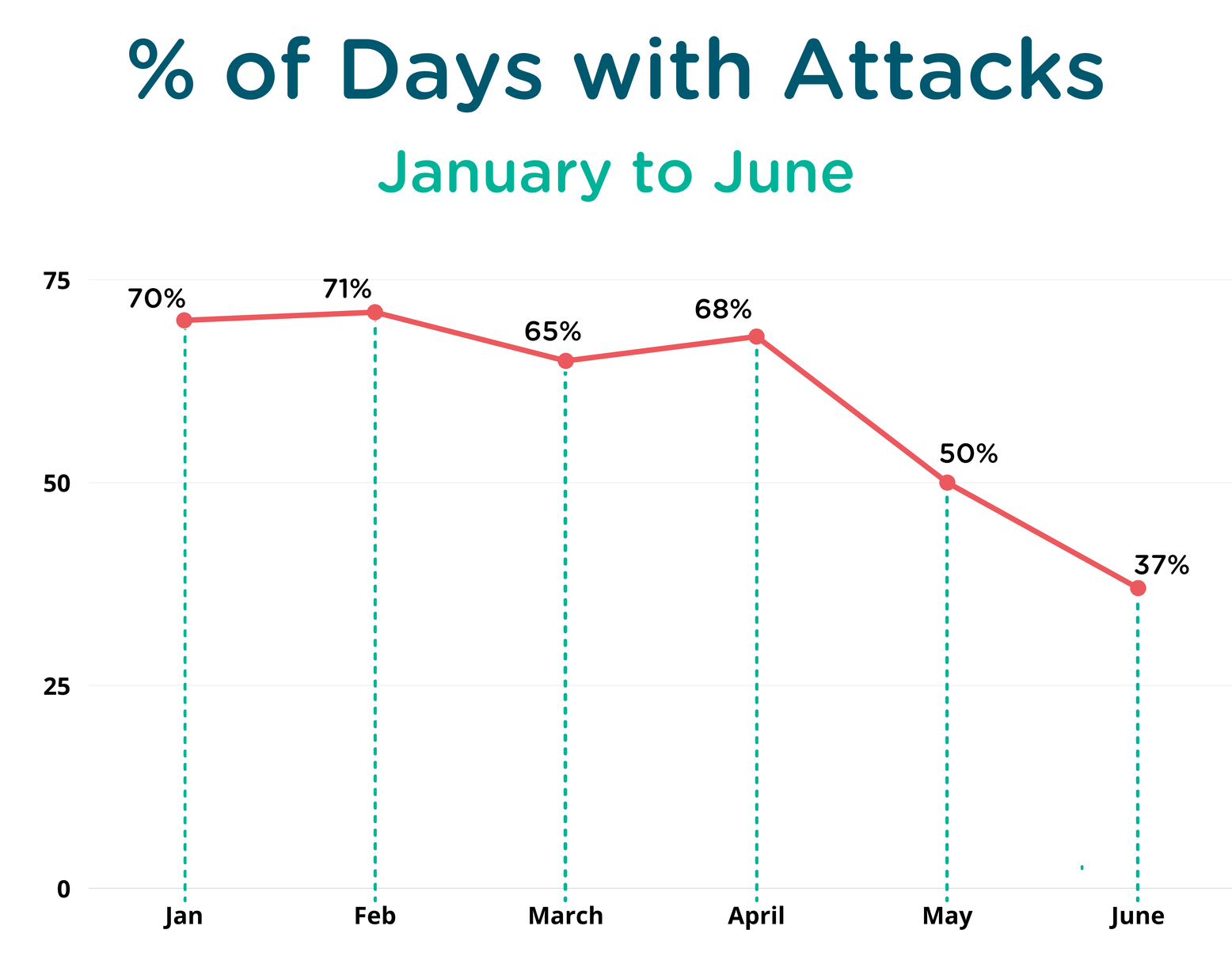
By telling us if you’ve had an attack each day on the Daily Summary Tracker, we’re able to see how regularly people are having attacks and how this frequency changes throughout the year. As you might expect, attack days were most frequent in the Winter during the coldest months of January and February. As the temperature has risen during the Spring and Summer months, the frequency of days with attacks has drastically decreased.
However, even in May and June, many users have continued to indicate that they are still experiencing attacks. This helps us to understand the number of people that experience Raynaud’s all year round and how often they are having attacks.
Attack Frequency - Number of Attacks per Day
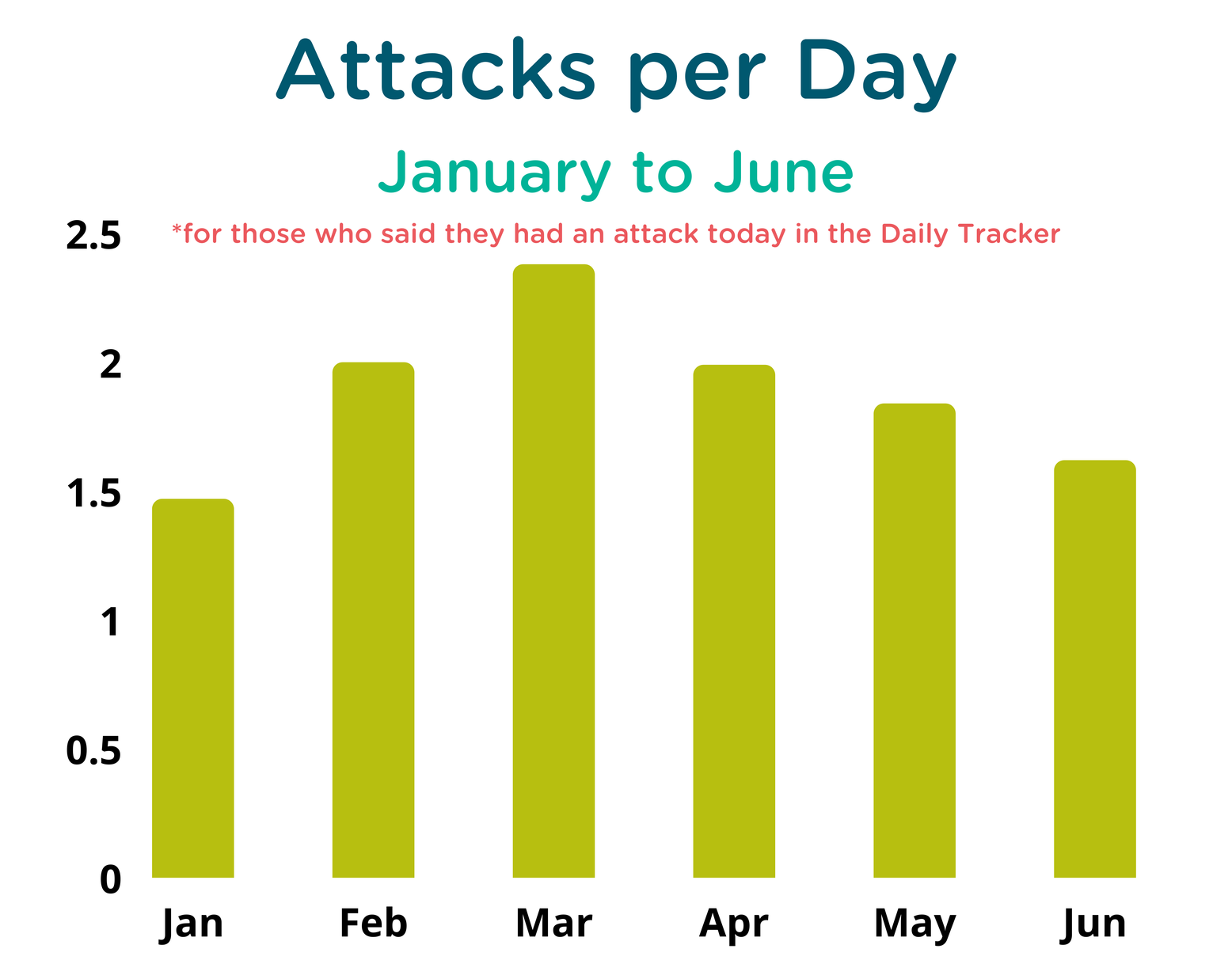
Although days with attacks have decreased in frequency, for those still having attack days there hasn’t been a large decrease in the number of attacks experienced per day on average. This shows that for the group of users that experience attacks all year round, attacks are still occurring with a fairly similar frequency compared to the colder winter months, although there has been a steady, albeit quite small, decrease throughout the Spring and Summer.
Attack Severity
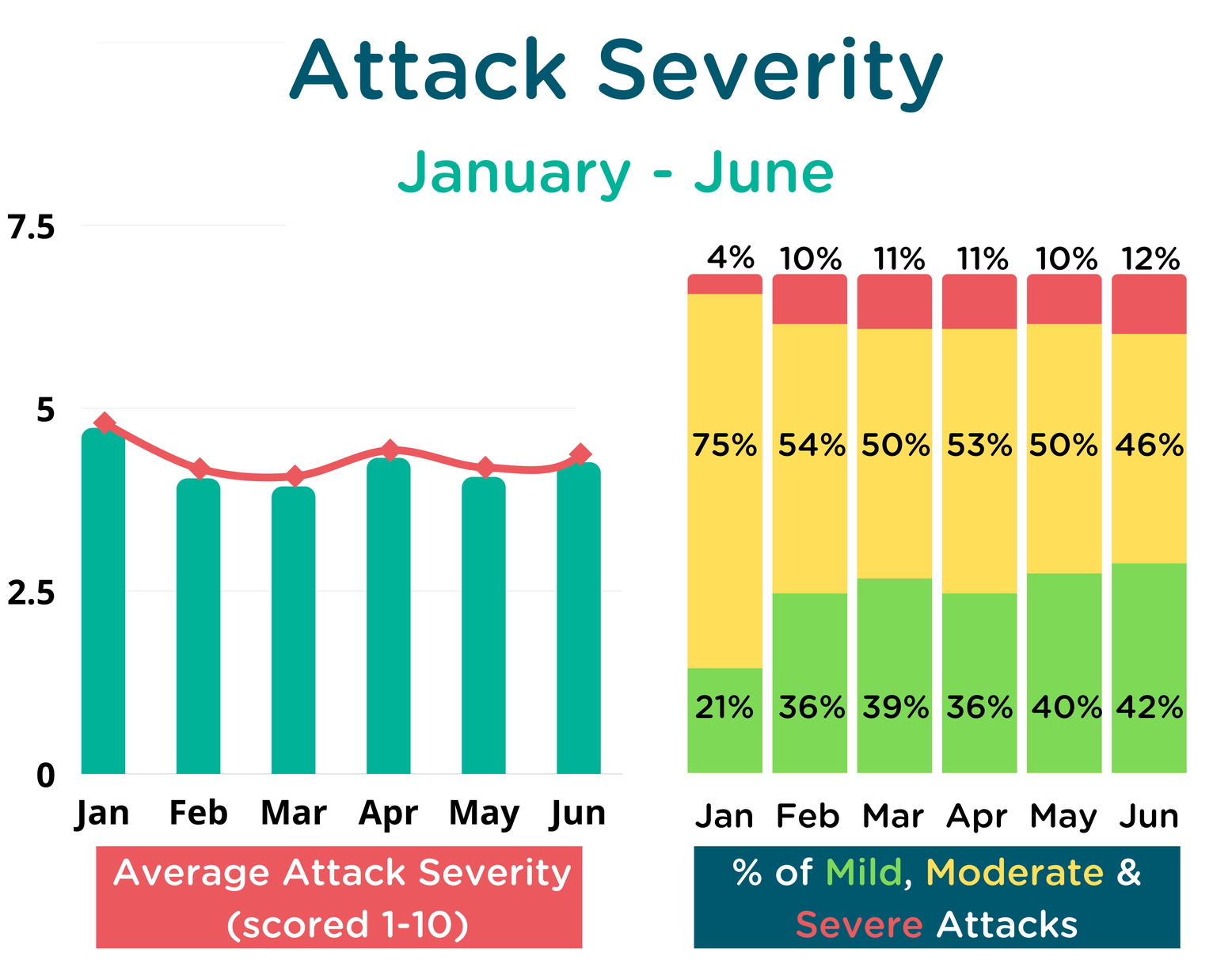
Whilst attacks have decreased in frequency as we have moved into Spring and Summer, their severity has remained relatively consistent over the six-month period. This suggests that vast majority of attacks are either moderate or mild, even in the colder winter months. The data also shows that for the group of users that experience attacks all year round, attacks have only become very marginally milder in the Spring and Summer, and have not significantly decreased in severity in the warmer months.
Attack Duration
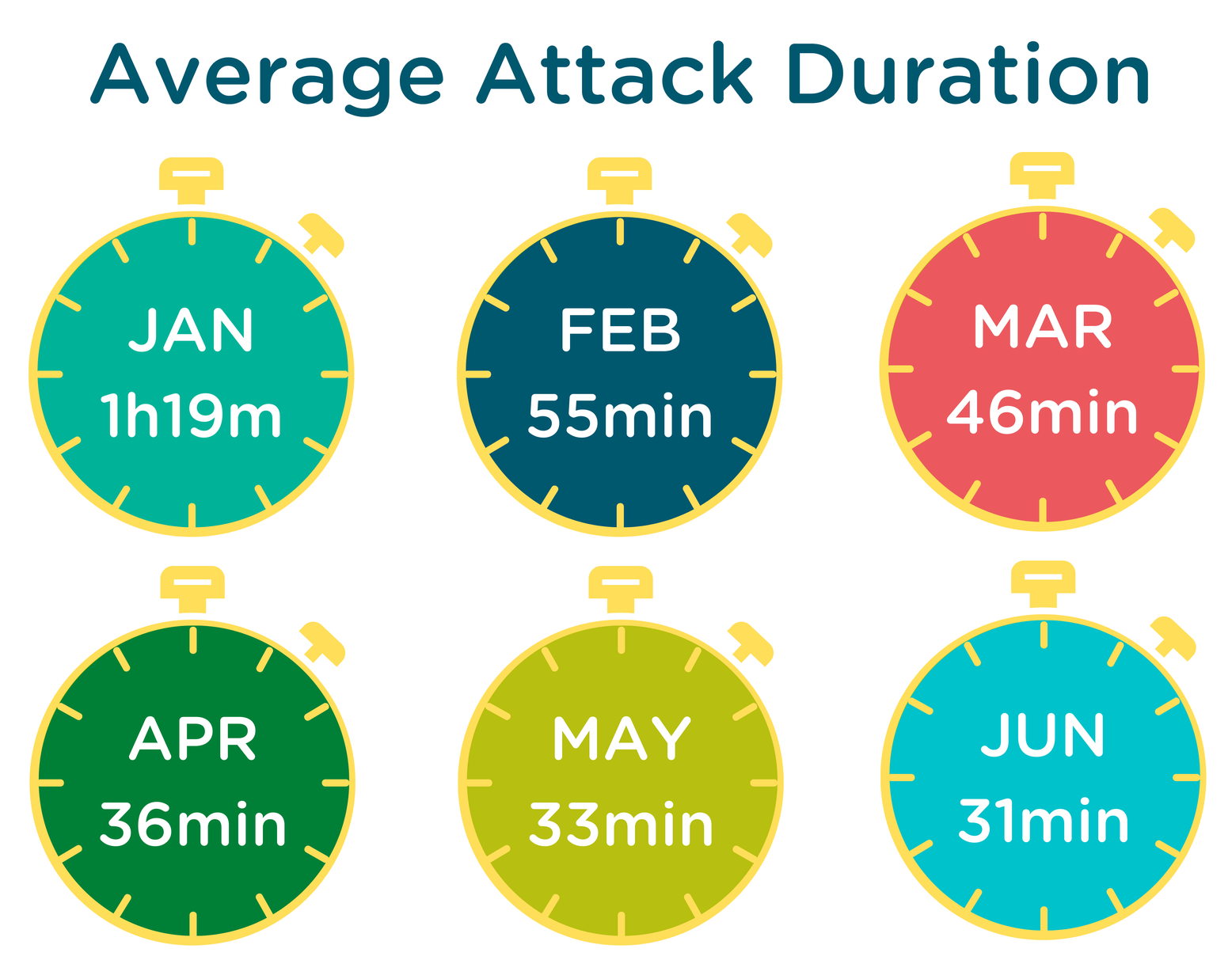
Attack duration was substantially higher in the winter months, with attacks lasting over an hour on average in January and just under an hour in February. The average duration of attacks has declined during Spring and Summer, which suggests that, for most STAR users, attacks in the warmer months of the year last for less time despite the fact they have remained similar in terms of severity.
Top Triggers
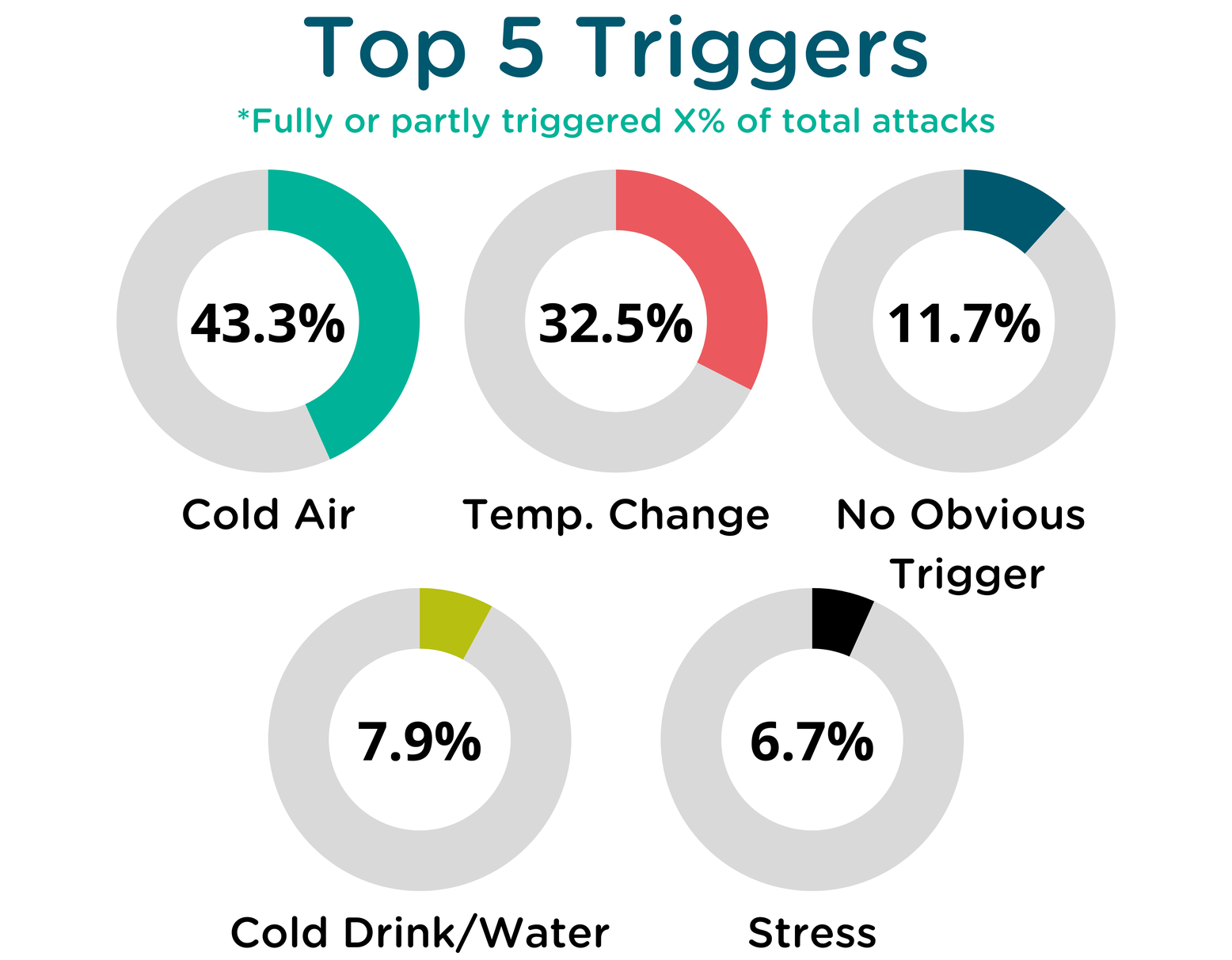
As expected, the primary triggers for attacks experienced by STAR users have been cold air and changes in temperature. However, the data from STAR has also shown that attacks sometimes occur without any obvious triggers, and can also often be brought on by stress rather than any form of temperature change or cold-related trigger. This has helped us better understand what causes attacks, and why some people experience attacks even when the temperature is warmer.
Which Body Parts have Attacks Affected?
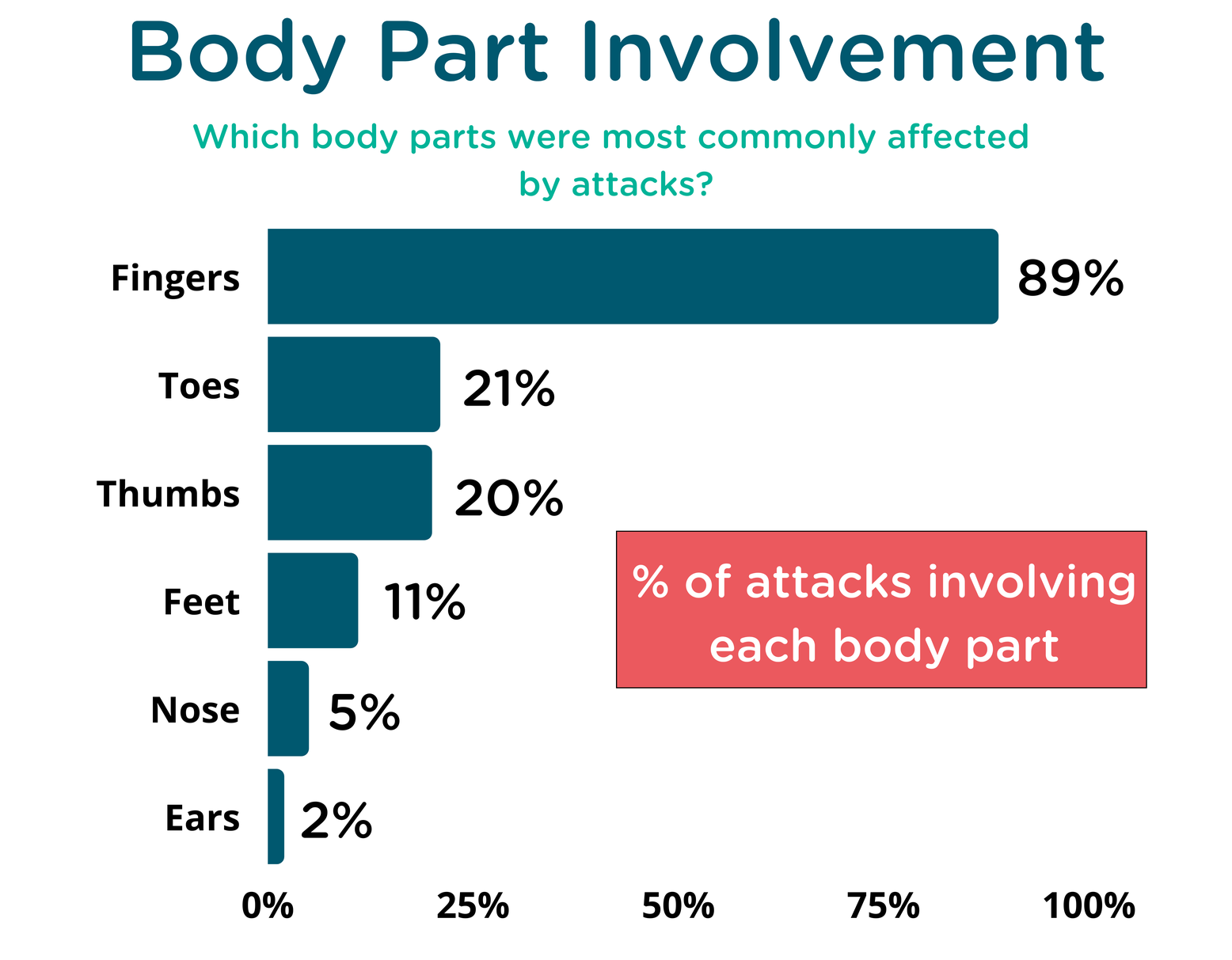
STAR users have reported that their attacks primarily affected their fingers, but many also experienced attacks which affected other body parts. The toes and feet were commonly affected, and 20% of attacks had some involvement of the thumb, which can sometimes suggest that the attacks are more serious and severe. Attacks did not just affect the hands and feet however, and although infrequent, some users have reported that facial features like the nose and ears were also affected by their Raynaud’s.
What colour changes were experienced?
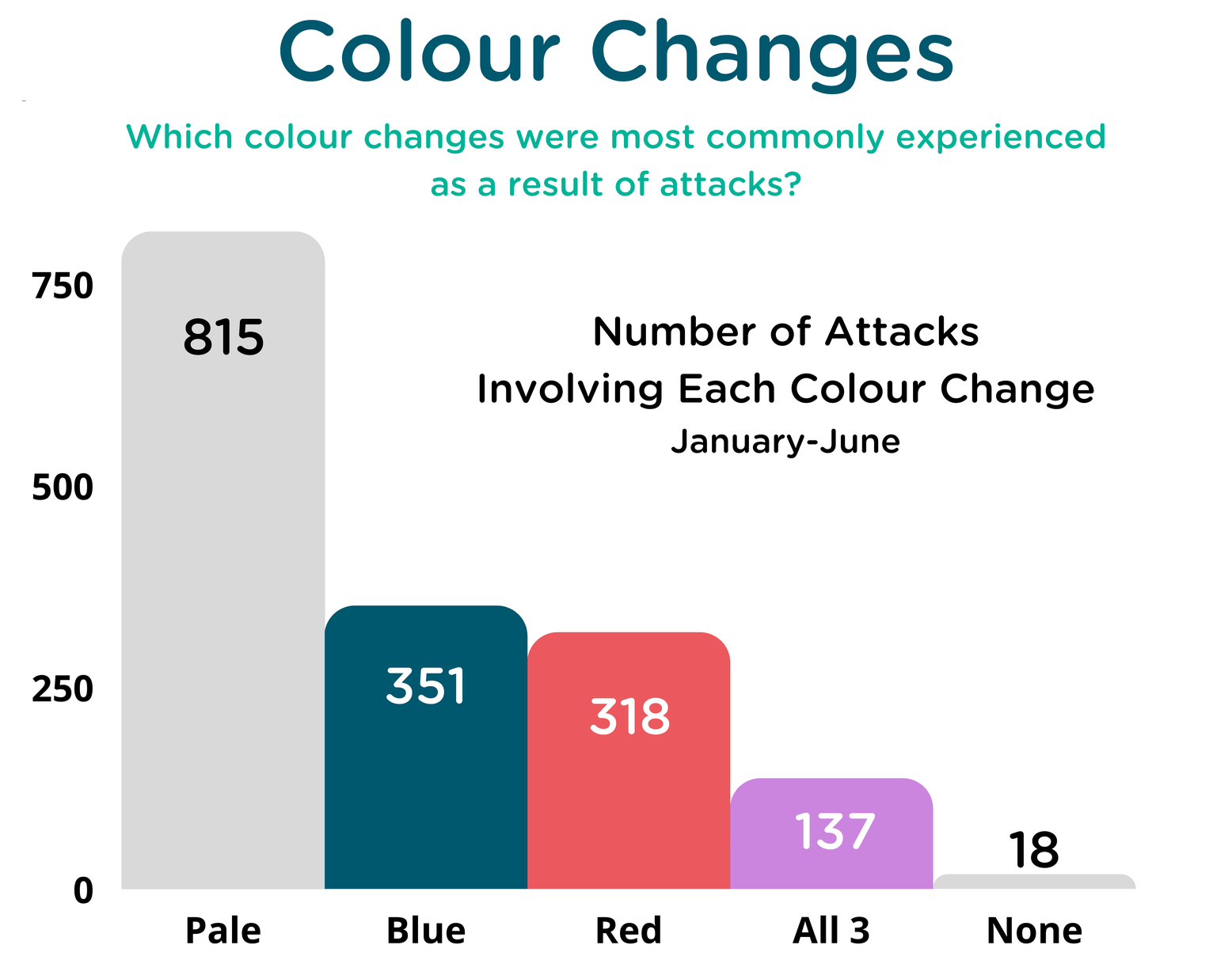
Paleness was the most frequently experienced colour change during attacks, but a high proportion of attacks also involved red and blue colour changes. 137 attacks involved all three pale, red and blue colour changes and other data has suggested that this was more frequently experienced when the severity of the attack was classed as extreme, which could indicate multiple colour changes are indicative of more serious and severe bouts of Raynaud’s.
STAR – Going Forward
We hope that STAR will continue to give our community a much-needed tool for tracking the symptoms of Raynaud’s and provide the insights which are so integral to improving the understanding of the condition. The more data we receive through the app allows us to better understand the condition and look for important trends in the symptoms of Raynaud’s, so please continue updating the Daily Tracker and recording individual attacks whenever you can.
Although the initial sign-up period for the app is now complete and we are not currently able to accept further registrations at this moment in time, do feel free to sign-up to download the app by visiting this page www.sruk.co.uk/researc... in order to register your interest in using the app in the future, and you will be added to a waiting list for STAR.
Please email raynaudsappsupport@sruk.co.ukwith any questions that you may have about using STAR, or joining the waiting list for the app.
